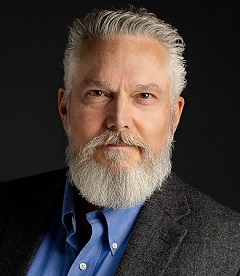Is My Conflict a "High Conflict?"

In my Resolving "High Conflict" (and how doing so can help prevent workplace violence) post, I shared some insights on the issue of how to resolve conflict that stems from polarized thinking, where both parties are steadfastly rooted in, and emotionally committed to, their opinion. Sadly, the divisiveness that results from this type of polarization has become all too common in today's world. The conflict management methodology described in that earlier post provides tips on how to mediate your way through high conflict situations in a way that is more likely to yield win-win rather than lose-lose outcomes. The purpose of this post is to help you identify when you are (or are not) dealing with a high conflict scenario.
High Conflict isn’t just something that’s relegated to complex social struggles like racism and climate change. It can also emerge and intensify in organizational settings, and even between individuals. Who hasn’t struggled with an “us-versus-them” situation at work where there can be intense disagreements related to limited resources or strategic priorities? So, how might we recognize the difference between good, healthy conflict and the corrosive and destructive form we call high conflict? While there’s no absolute answer, since human behavior can be so complex, you might ask yourself the following questions as a way to see more deeply into a situation. Sometimes, but not always, these kinds of questions can help buy us some time as well as give us some emotional space in order to consider a conflict situation from a little distance. So, ask yourself…
- Do you lose sleep thinking about this conflict?
- Do you feel good when something bad happens to the other person?
- If the other side did something you actually agreed with, would you have a hard time acknowledging that to others?
- Does it feel to you like the other side is brainwashed and beyond the reach of moral reasoning?
- Do you feel stuck... As though your brain keeps grinding through the same grievances, over and over again, without providing new insights?
- Do you find yourself saying the same things over and over again when talking about the conflict with those who agree with you? Do you leave those conversations feeling slightly worse than before?
- Has someone who knows you very well told you they don’t recognize you anymore?
- Do you ever find yourself defending your own side by pointing out that the ‘other side’ does the same thing—or worse?
- Do you see different people on the other side as essentially interchangeable? If your conflict is with just one other person, is it hard to imagine them as the small child they once were, even if you try?
- Do you find yourself using sweeping generalizations like “always” or “never," or words that imply judgment like “good,” or “bad,” or loaded terms like “war” or “crush” or “kill” when you talk about the conflict?
- Do you find it hard to remember the last time you felt genuine curiosity about the other side’s thoughts, intentions, or actions?1
If you answered yes to five or more of these questions, it may be fair to say that you’re in a high conflict situation. And there’s no judgment here. You may have very good reasons for being in high conflict. But if you can recognize it, then you can at least evaluate whether or not that’s still working for you. High conflict always comes with a cost… both personally and on the people you know and love.
On the other hand, if you answered yes to four or fewer of the questions, then you’re probably not in high conflict, which means you have more choices now than you might have later. Possible solutions and creative ways forward will likely disappear as the conflict escalates, which means it will be important to work on ways to stay in that place where goodwill and empathy for one another can be cultivated and nurtured; find some mental space, don’t forget to breathe, and resist the tendency to polarize the issue(s). As a poet once wrote many years ago, “Out beyond the ideas of wrongdoing and rightdoing, there is a field. I’ll meet you there.”
~ Heart and courage.
James
1 Adapted from Ripley, Amanda. High Conflict: Why We Get Trapped and How We Get Out (p. 287). Simon & Schuster. Kindle Edition.
 James Sporleder has more than 25 years' experience in the security industry. With a unique background in specialized captivity survival, James has trained thousands of US military personnel from one of the most elite units in the US Department of Defense. He’s worked in the corporate arena for more than 17 years, focusing on the development and implementation of specialized training programs and helping more than 50 percent of the Fortune 100 prepare for and respond to emerging challenges related to workplace violence, intimate partner violence, and extreme violence such as active shooter.
James Sporleder has more than 25 years' experience in the security industry. With a unique background in specialized captivity survival, James has trained thousands of US military personnel from one of the most elite units in the US Department of Defense. He’s worked in the corporate arena for more than 17 years, focusing on the development and implementation of specialized training programs and helping more than 50 percent of the Fortune 100 prepare for and respond to emerging challenges related to workplace violence, intimate partner violence, and extreme violence such as active shooter.




